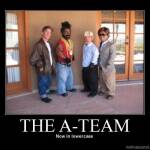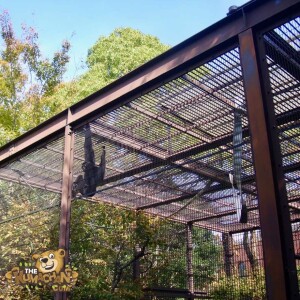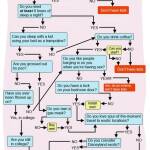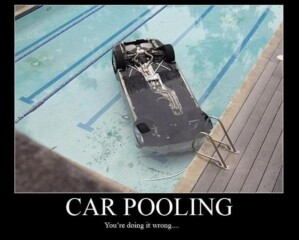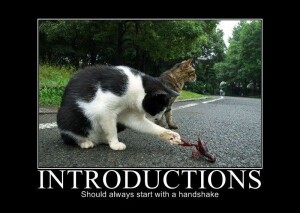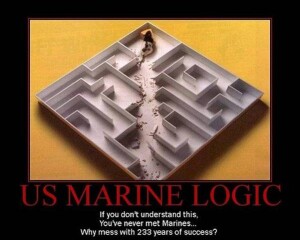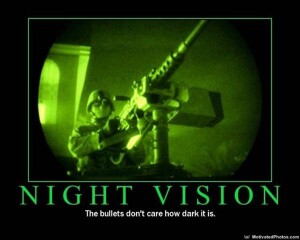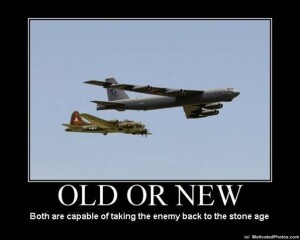My wife has been missing a week now. The police said to prepare for the worst. So, I went down to Goodwill to get all of her clothes back.
Talking Behind My Back
A wife says to her husband “You’re always pushing me around and talking behind my back.”
And he says “What do you expect? You’re in a wheelchair!”
Stalker
My girlfriend says she thinks that I might be a stalker. Well…she’s not exactly my girlfriend yet.
My Wife is Dead
A man calls 911 and says “I think my wife is dead”.
The operator says, “How do you know?”
He says “The sex is about the same, but the ironing is piling up!”
Little Johnny Doesn’t Need Anything
A teacher goes around her class asking each of the kids what do they need at home.
1st kid says “A computer”.
Teacher replies “That’d be very useful.”
2nd kid says “a new lawn mower” and gets a similar response.
Little Johnny pops up and says ” At my house we don’t need nothin.”
The teacher asks him to think again carefully as everybody needs something.
Little Johnny replies, “no I’m sure.”
“When my sister started going out with a Muslim, I remember my dad saying,
“Well, that’s the last damned thing we need.”
Cost of Living
The cost of living has now gotten so bad that my wife is having sex with me because she can’t afford batteries!
Too Many Immigrants in Britain?
Question – Are there too many immigrants in Britain?
17% said yes;
11% said No;
72% said “I am not understanding the question please.”
Thrown Out of School
My son was thrown out of school today for letting a girl in his class give him a hand-job. I said “Son, that’s 3 schools this year! You’d better stop before you’re banned from teaching altogether.”
Love the Hot Weather
The thing I love most about this hot weather is the short skirts and low cut tops….although, they do make me look a bit gay.
Pedophile
Went to the pub with my girlfriend last night. Locals were shouting “pedophile!”and other names at me, just because my girlfriend is 21 and I’m 50. It completely spoiled our 10th anniversary.
Penis Enlarger
The wife suggested I get myself one of those penis enlargers, so I did….she’s 21 and her name’s Lucy.
Turned to Religion
I was devastated to find out my wife was having an affair but, by turning to religion, I was soon able to come to terms with the whole thing. I converted to Islam, and we’re stoning her in the morning!
Story from a Kansas State Highway Patrol officer
Story from a Kansas State Highway Patrol officer:
I made a traffic stop on an elderly lady the other day for speeding on U.S. 166 Eastbound at Mile Marker 73 just East of Sedan, KS. I asked for her driver’s license, registration, and proof of insurance. The lady took out the required information and handed it to me. In with the cards I was somewhat surprised (due to her advanced age) to see she had a conceal carry permit. I looked at her and ask if she had a weapon in her possession at this time.
She responded that she indeed had a .45 automatic in her glove box. Something—body language, or the way she said it—made me want to ask if she had any other firearms. She did admit to also having a 9mm Glock in her center console. Now I had to ask one more time if that was all. She responded once again that she did have just one more, a .38 special in her purse. I then asked her what was she so afraid of.
She looked me right in the eye and said, “Not a fucking thing!”
Husband Store
A store that sells new husbands has opened in New York City, where a woman may go to choose a husband. Among the instructions at the entrance is a description of how the store operates:
You may visit this store ONLY ONCE! There are six floors & the value of the products increase as the shopper ascends the flights. The shopper may choose any item from a particular floor, or may choose to go up to the next floor, but you cannot go back down except to exit the building!
So, a woman goes to the Husband Store to find a husband. On the first floor the sign on the door reads:
Floor 1 – These men Have Jobs.
She is intrigued, but continues to the second floor, where the sign reads:
Floor 2 – These men Have Jobs and Love Kids.
‘That’s nice,’ she thinks, ‘but I want more.’
So she continues upward. The third floor sign reads:
Floor 3 – These men Have Jobs, Love Kids, and are Extremely Good Looking.
‘Wow,’ she thinks, but feels compelled to keep going.
She goes to the fourth floor and the sign reads:
Floor 4 – These men Have Jobs, Love Kids, are Drop-dead Good Looking and Help With Housework.
‘Oh, mercy me!’ she exclaims, ‘I can hardly stand it!’
Still, she goes to the fifth floor and the sign reads:
Floor 5 – These men Have Jobs, Love Kids, are Drop-dead Gorgeous, Help with Housework, and Have a Strong Romantic Streak.
She is so tempted to stay, but she goes to the sixth floor, where the sign reads:
Floor 6 – You are visitor 31,456,012 to this floor. There are no men on this floor. This floor exists solely as proof that women are impossible to please.. Thank you for shopping at the Husband Store.
PLEASE NOTE:
To avoid gender bias charges, the store’s owner opened a New Wives store just across the street. The first floor has wives that love sex. The second floor has wives that love sex & have money & like beer. The third, fourth, fifth and sixth floors have never been visited.
Sex Frogs
A blonde goes to her local pet store in search of an ‘exotic’ pet. As she looks about the store, she notices a box FULL of frogs. The sign says:
‘SEX FROGS’ Only $20 each! Come with ‘complete’ instructions.
The girl excitedly looks around to see if anybody’s watching her. She whispers softly to the man behind the counter, ‘I’ll TAKE one!’
As the man packages the frog, he quietly says to her, ‘Just follow the instructions!’
The blonde nods, grabs the box, and is quickly on her way home. As soon as she closes the door to her apartment, she opens the instructions and reads them very carefully. She does EXACTLY what is specified:
1. Take a shower.
2. Splash on some nice perfume.
3. Slip into a very sexy nightie.
4. Crawl into bed and place the frog down beside you, and allow the frog to do what he has been trained to do.
She then quickly gets into bed with the frog and to her surprise…NOTHING happens! The blonde is very disappointed and quite upset at this point. She re-reads the instructions and notices at the bottom of the paper it says, ‘If you have any problems or questions, please call the pet store.’
So, she calls the pet store. The man says, ‘I’ll be right over.’ Within minutes, the man is ringing her doorbell. The blonde welcomes him in and says, ‘See, I’ve done everything according to the instructions. The damn frog just SITS there!’
The man . . . looking very concerned, picks up the frog, stares directly into its eyes and STERNLY says: LISTEN TO ME!! I’m only going to show you how to do this ONE MORE TIME!!!
Distinction Between Guts and Balls
To those of you who are nit-pickers about the meaning of words: there is a medical distinction between Guts and Balls. We’ve all heard about people having Guts or Balls, but do you really know the difference between them?
In an effort to keep you informed, here are the definitions:
GUTS – is arriving home late, after a night out with the guys, being met by your wife with a broom, and having the Guts to ask, ‘Are you still cleaning, or are you flying somewhere?’
BALLS – is coming home late after a night out with the guys, smelling of perfume and beer, with lipstick on your collar, and slapping your wife on the butt and having the Balls to say, ‘You’re next, Chubby.’
I hope this clears up any confusion on the definitions.
Medically speaking, there is no difference in the outcome.
Both result in death.
Married Friends
The first man married a woman from Alabama. He told her that she was to do the dishes and house cleaning. It took a couple of days, but on the third day, he came home to see a clean house and dishes washed and put away.
The second man married a woman from South Dakota . He gave his wife orders that she was to do all the cleaning, dishes and the cooking. The first day he didn’t see any results, but the next day he saw it was better. By the third day, he saw his house was clean, the dishes were done, and there was a huge dinner on the table.
The third man married a girl from Wisconsin … He ordered her to keep the house cleaned, dishes washed, lawn mowed, laundry washed, and hot meals on the table for every meal. He said the first day he didn’t see anything, the second day he didn’t see anything but by the third day, some of the swelling had gone down and he could see a little out of his left eye, and his arm was healed enough that he could fix himself a sandwich and load the dishwasher. He still has some difficulty when he pees.
Green Persimmons
There was a small church in North Carolina that had a very big-busted organist. Her breasts were so huge that they bounced and jiggled while she played the organ. Unfortunately, she distracted the congregation considerably.
The very proper church ladies were appalled. They said something had to be done about this or they would have to get another Organist.
So, one of the ladies approached her very discreetly and told her to mash up some green persimmons and rub them on the nipples of her breasts and maybe they would shrink in size, but warned her to not eat any of the green persimmons, because they are so sour they will make your mouth pucker up and you won ‘t be able to talk properly for a while. She agreed to try it.
The following Sunday morning the minister got up in the pulpit and said…’Dew to thircumsthanthis bewond my contwol, we will not hath a thermon tewday.’
He said To Me!
He said to me… I don’t know why you wear a bra; you’ve got nothing to put in it?
I said to him… You wear pants don’t you?
He said to me… Shall we try swapping positions tonight?
I said to him… That’s a good idea – you stand by the stove & sink while I sit on the sofa and do nothing, but fart.
He said to me… What have you been doing with all the grocery money I gave you?
I said to him… Turn sideways and look in the mirror!
He said to me… How many men does it take to change a roll of toilet paper?
I said to him… I don’t know; it has never happened.
He said to me… Why is it difficult to find men who are sensitive, caring and Good-looking?
I said to him…They already have boyfriends.
He said… What do you call a woman who knows where her husband is every night?
I said to him… A widow.
He said to me… Why are married women heavier than single women?
I said to him… Single women come home, see what’s in the fridge and go to bed. Married women come home, see what’s in bed and go to the fridge.
Labor Standards
The Montana Department of Employment, Division of Labor Standards claimed a small rancher was not paying proper wages to his help and sent an agent out to investigate him.
GOV’T AGENT: “I need a list of your employees and how much you pay them.”
RANCHER: ”Well, there’s my hired hand who’s been with me for 3 years I pay him $200 a week plus free room and board. Then there’s the mentally challenged guy. He works about 18 hours every day and does about 90% of all the work around here. He makes about $10 per week, pays his own room and board, and I buy him a bottle of bourbon every Saturday night so he can cope with life. He also sleeps with my wife occasionally.”
GOV’T AGENT: “That’s the guy I want to talk to – the mentally challenged one.”
RANCHER: “That would be me.”
Minnesota Vikings
The Minnesota Highway Patrol is cracking down on speeders heading into Minneapolis.
For the first offense, they give you 2 Vikings tickets.
If you get stopped a second time, they make you use them.
Q. What do you call 47 millionaires around a TV watching the Super Bowl?
A. The Minnesota Vikings
Q. What do the Vikings and Billy Graham have in common?
A. They both can make 70,000 people stand up and yell “Jesus Christ”.
Q. How do you keep a Minnesota Viking out of your yard?
A. Put up a goal post.
Q. What do you call a Minnesota Viking with a Super Bowl ring?
A. An Imposter.
Q. What’s the difference between the Minnesota Viking and a dollar bill?
A. You can still get four quarters out of a dollar bill.
Q. How many Minnesota Vikings does it take to win a Super Bowl?
A. Nobody Knows
Q. What do the Vikings and a possum have in common?
A. Both play dead at home and get killed on the road!
Halloween Costume
A bald man with a wooden leg gets invited to a Halloween Party. He doesn’t know what costume to wear to hide his head and his leg, So he writes to a costume company to explain his problem.
A few days later he received a parcel with the following note:
Dear Sir,
Please find enclosed a pirate’s outfit. The spotted handkerchief will cover your bald head and, with your wooden leg, you will be just right as a pirate.
Very truly yours,
Acme Costume Co.
The man thinks this is terrible because they have emphasized his wooden leg and so he writes a letter of complaint. A week goes by and he receives another parcel and a note, which says:
Dear Sir,
Please find enclosed a monk’s costume. The long robe will cover your Wooden leg and, with your bald head, you should really look the part.
Very truly yours,
Acme Costume Co.
Now the man is really upset since they have gone from emphasizing his wooden leg to emphasizing his bald head, so again he writes the Company another nasty letter of complaint.
The next day he gets a small Parcel and a note, which reads:
Dear Sir,
We have TRIED our very BEST. Please find enclosed a bottle of molasses and a bag of crushed nuts. Pour the molasses over your bald head, pat on crushed nuts, stick your Wooden Leg up your ass and go as a caramel apple.
Very truly yours,
Acme Costume Co.

















































































